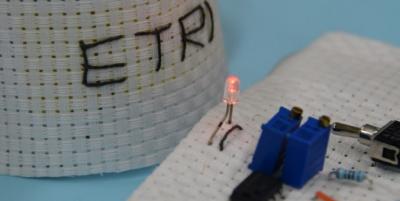A team of scientists from the Electronics and Telecommunications Research Institute (ETRI) in Korea announced the successful development of a technology to make a washable, flexible and highly-sensitive textile-type gas sensor.

This technology is based on coating graphene using molecular adhesives to textile like nylon, cotton, or polyester so that textile can check whether or not gas exists in the air. When graphene oxides meet the NO2 found in methane gases at room temperatures, their resistivity changes based on the gas density. Consequently, when putting out a fire or entering an area in which air conditions are hard to determine, it will be possible for firefighters to check the condition of the air through a connected device by wearing work clothes with gas sensors made from textiles.
The researchers state that the gas sensor can maintain its function after being washed or bent. Since the sensor is made from µm or mm thick threads or textiles, it can be utilized by putting a detecting substance on it. On top of that, it does not need additional power to operate. ETRI scientists are working to expand the kind of detectable gases, and plan to transfer the manufacturing technology to a flexible electronic device maker, a wearable device supplier, or a company related to textile-type filters.
In May 2015, an international team of scientists designed a new technique for embedding transparent and flexible graphene electrodes into fibers commonly used in the textile industry.